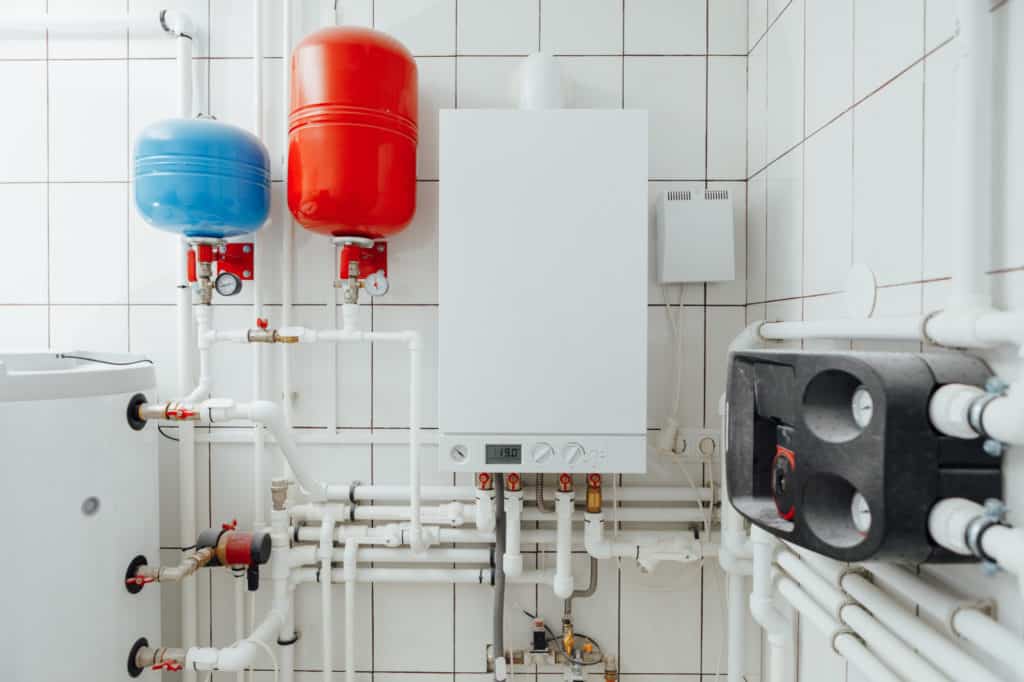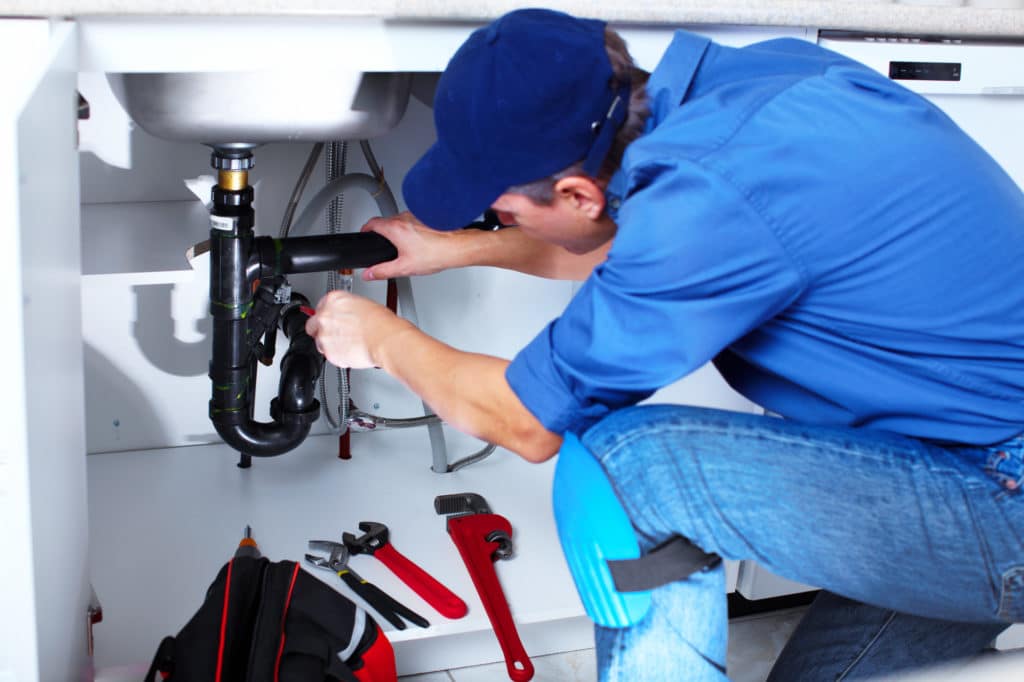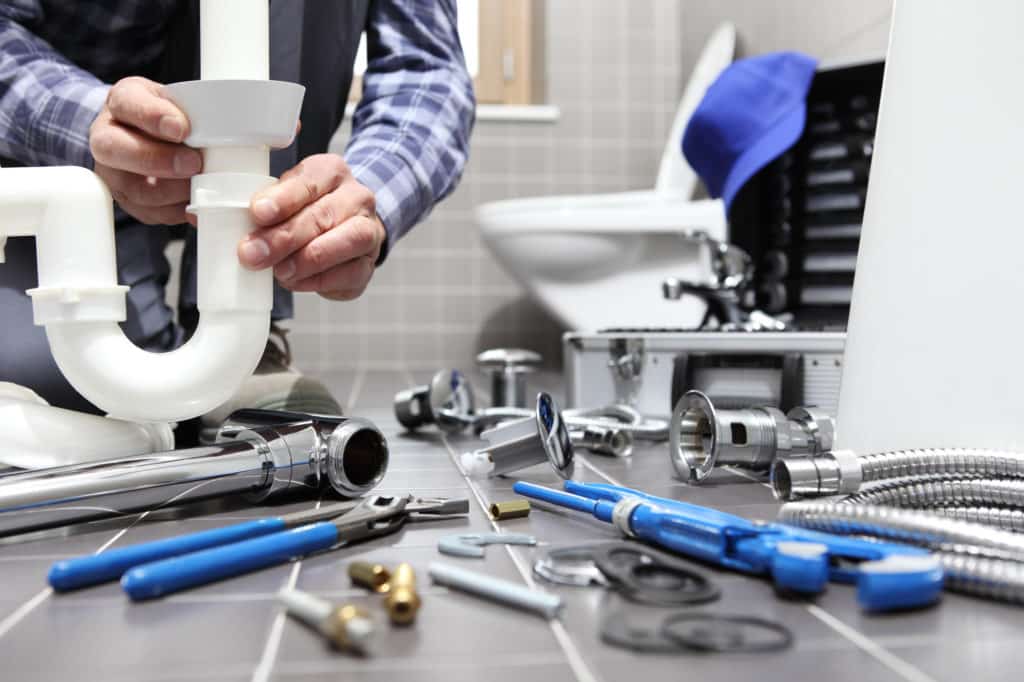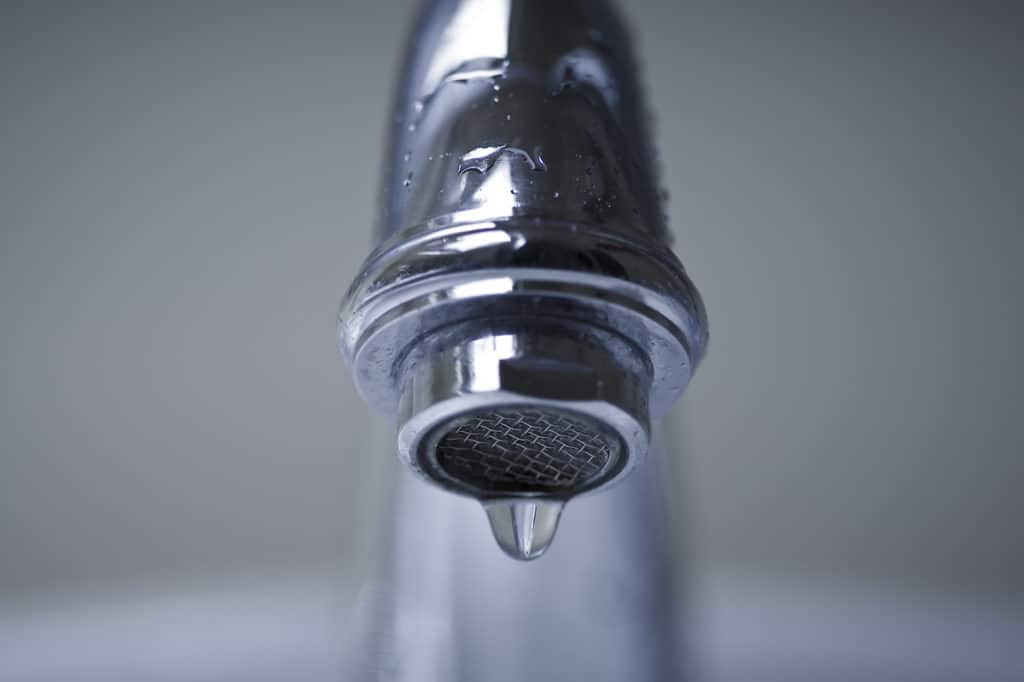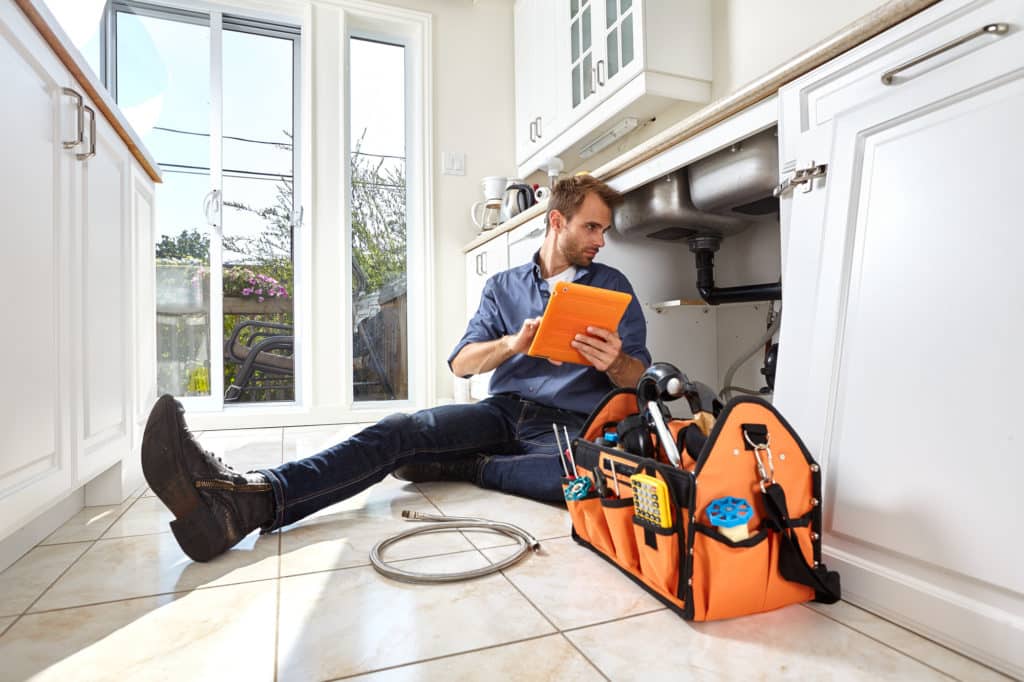Isn’t it frustrating when you can’t seem to silence that maddening drip-drop sound of a leaky faucet in your home? As pesky as it may seem, a leaky faucet is more than just a minor annoyance. Not only does it disrupt the quietude of your home, but it’s also a silent culprit of water wastage. Some reports suggest that a small faucet leak can waste up to a hundred dollars worth of water. It can even lead to more significant issues if left unchecked, causing extensive damage and costing you even more.
Understanding why your faucet is dripping is key to knowing how to fix it. The reasons vary from a damaged cartridge, broken washers, malfunctioning O-rings, to deteriorated valve seats. Sometimes, it’s as simple as your home’s water pressure causing those frustrating leaks. Familiarizing yourself with these common causes can save you time, money, and the stress of dealing with a continuous leak.
| Common Causes of Leaky Faucets | Quick Solution |
|---|---|
| Damaged Cartridge | Replace the cartridge |
| Broken Washer | Replace washer with right size |
| High Water Pressure | Adjust water pressure levels |
| Malfunctioning O-Ring | Replace O-Ring |
| Deteriorated Valve Seat | Clean or replace valve seat |
Further along, we’ll dive deeper into these causes, how to identify your faucet type, and the tools needed to fix a leaky faucet effectively. With our easy-to-follow guide, we’ll transform you into a confident handy-person, capable of tackling your leaky faucet head-on and restoring peace to your home. Stay with us through this article, and we promise, fixing a leaky faucet won’t feel like a daunting task anymore.
Understanding the Causes of a Leaky Faucet
Before we dive into the step-by-step guide to fixing your problem, it’s crucial to understand the common causes of a leaky faucet. This knowledge will not only help you identify the origin of the leak but also prevent future faucet issues. Here are the main culprits:
Damaged Cartridge
Cartridge-style faucets have two handles, each controlling the flow of hot and cold water. Inside these handles, you’ll find the cartridge – a valve that regulates water flow. A drip from your faucet could be indicative of a damaged cartridge, a common cause of leaky faucets.
Broken Washers
Another frequent source of faucet leaks is broken or worn-out washers. These small components rest against the valve seat, and over time, friction can cause them to deteriorate, resulting in a leak. Incorrectly sized or poorly installed washers can also lead to leakage.
Water Pressure Issues
Sometimes, your faucet might only leak at certain times or when the handles are in a specific position. This issue could be attributed to your home’s water pressure. If the pressure is too high, it can cause the faucet to drip.
Malfunctioning O-Rings
A small disc known as an O-ring is attached to the stem screw in your sink’s faucet, helping to hold the handle in place. Much like washers, O-rings can also wear out or become loose over time, causing your faucet to leak.
Deteriorated Valve Seats
The valve seat is the connection between the faucet and the spout. If your faucet is leaking from the spout, a corroded valve seat might be the problem. Sediment can accumulate and corrode the seat, leading to a leak.
Understanding these potential causes will give you a better idea of what you’re dealing with when you start the repair process. But remember, it’s always better to seek professional help if the problem persists or becomes too challenging. At Plumbing Pros DMV, we’re always ready to step in and ensure your home remains leak-free.
Identifying the Type of Your Faucet
Before you start fixing your leaky faucet, it’s crucial to identify its type. Each type has a unique design and mechanism, which means the repair process will differ for each. Here are the four main types of faucets you’ll encounter:
Cartridge Faucets
Cartridge faucets are often found in bathrooms and are quite easy to identify – they have two handles on either side of the spout. The handle moves up and down to control the water flow, and the inner workings of the faucet house a cartridge that moves to regulate the water. Cartridge faucets are known for their durability and ease of use. When it comes to repairing them, it usually involves replacing the cartridge or the O-rings.
Disc Faucets
Disc faucets are a newer addition to the faucet family, often seen as more expensive yet highly reliable. They have a single lever over a cylindrical body, hence the name. These faucets are known for their long-lasting nature. If a disc faucet is leaking, it’s often due to worn or damaged seals.
Ball Faucets
Ball faucets use a ball joint mechanism to control both hot and cold water lines. They’re identifiable by a single handle resting on a rounded cap right above the spout. The handle moves up and down for pressure and left to right for temperature control. Ball faucets are commonly found in kitchens and other high-usage areas. If your ball faucet is leaking, it might be due to worn O-rings or a worn-out ball assembly.
Compression Washer Faucets
Despite being the oldest type of faucet, compression washer faucets are still widely used today. They employ rubber washers to create a tight seal against the flow of water. These faucets have two handles that move side to side, and you can feel the handle tightening as you shut it off. If a compression faucet is leaking, you likely need to replace the washer.
Knowing your faucet type helps you diagnose the problem more accurately and allows you to repair it more effectively. If you’re unsure about your faucet type or the repair process, don’t hesitate to reach out. At Plumbing Pros DMV, we’re always ready to assist you in maintaining a leak-free home.
Step-by-Step Guide to Fixing a Leaky Faucet
Having identified the type of your faucet and understood the common causes of a leaky faucet, let’s delve into the step-by-step process of fixing it. The key to a successful DIY plumbing repair is patience and attention to detail. Here’s how to do it:
Step 1: Deactivating the Water Supply
Before you start any repair, it’s crucial to deactivate the water supply. This step is essential to prevent flooding your bathroom or kitchen. Locate the fixture shutoff valves beneath the sink and turn the handles clockwise. If your faucet doesn’t have shutoff valves, turn off the main water supply for the house. Confirm that the water is off by turning the faucet on. If no water comes out, you’re good to go.
Step 2: Disassembling the Faucet Handles
The next step is to remove the handles of your faucet. For standard fixtures, use a flathead screwdriver to remove the caps on top of the handle, revealing the handle screws. Unscrew these and pull the handles off. If your faucet is a different type, refer to its manual or find instructions online.
Step 3: Detaching the Valve Stem
Once the faucet handle is removed, you’ll see the inner valve stem or cartridge. This also needs to be removed. For compression faucets, the brass valve stem can be unscrewed. Cartridge faucets can be pulled straight out.
Step 4: Inspecting the Parts
Having taken all the parts out, carefully inspect them. Look for signs of wear or damage on the rubber washers, O-rings, and seals. This step will help you identify what needs to be replaced to fix your leaky faucet.
Step 5: Replacing Damaged Parts
If you find any parts that are worn out or damaged, replace them. Visit your local hardware store and find the parts you need. Bring the old ones to the store and ask for duplicates to ensure you get the exact replacements.
Step 6: Sanitizing the Valves
After replacing the damaged parts, it’s a good practice to clean the valve seats using white vinegar. This helps remove mineral deposits and keep the new parts functioning optimally.
Step 7: Reassembling the Faucet
Once all the necessary parts have been replaced and the valve seats cleaned, it’s time to reassemble your faucet. Follow the disassembly steps in reverse order, ensuring each part is securely in place.
If at any point during this process you feel uncertain, it’s always best to call in a professional. We at Plumbing Pros DMV are here to help. Our expert, James D. – CEO, has comprehensive guides on our website addressing different types of faucets and their repair processes.
In the next section, we’ll share some handy tips to ensure a successful faucet repair.
Tips for Successful Faucet Repair
Fixing a leaky faucet can seem daunting, but with the right approach and a few pro tips, it can be a simple, rewarding DIY project. Here are some handy hints to help you nail that faucet repair job.
Matching the Size and Type of Replacement Parts
In faucet repair, one size does not fit all. Remember that there are different types of faucets – cartridge, compression, ceramic disk, and ball type – each with its own unique set of parts. So, when replacing the faulty parts in your faucet, make sure they are a perfect match for the originals. This means not just the type of part, but also its size. Whether it’s an O-ring or a washer, the wrong size or type can lead to more leaks and frustration.
Using Plumbers Grease on New O-Rings and Washers
Before you reassemble the faucet, apply a small amount of nontoxic, heat-proof plumber’s grease on the new O-rings and washers. This simple step can significantly extend the life of these parts, ensuring a longer-lasting seal and preventing future leaks.
Cleaning Mineral Deposits with Distilled White Vinegar
Mineral deposits can build-up in your faucet over time, leading to blockages and leaks. But, there’s a simple household remedy to this problem – distilled white vinegar. Soak a soft scouring pad in vinegar and gently scrub the parts to break down and remove these deposits. Rinse thoroughly before reassembling the faucet to ensure a clean, smooth operation.
Ensuring the Water is Turned Off Before Starting Repairs
This might seem like an obvious tip, but it’s worth repeating. Make sure to turn off the water supply before you start working on your faucet. This can usually be done by finding the shut-off valves beneath your sink and turning them clockwise. Not only will this prevent a potential flood, but it also safeguards the faucet parts from sudden pressure or damage while you’re working on them.
Following these tips can help make your faucet repair a breeze. But remember, if you encounter a problem that’s beyond your skill set, don’t hesitate to seek professional help. At Plumbing Pros DMV, we’re always ready to assist with your plumbing needs.
When to Seek Professional Help
Understanding When a Repair is Beyond DIY
While it’s always satisfying to fix a leaky faucet yourself, there are situations where professional help becomes necessary. If you’ve followed the steps outlined above but your faucet continues to leak, it might be due to a more complex underlying issue that requires advanced tools and specialized skills. For instance, persistent low water pressure or a persistent drip might indicate a problem with the faucet’s cartridge or stem assembly, which is not easily fixable with basic household tools.
If the faucet parts are old and worn out, the leak will likely worsen over time. In such cases, it’s best to call in a professional who can diagnose the problem and fix it efficiently. A timely repair can save you from significant water waste and sky-rocketing utility bills.
The Benefits of Professional Plumbing Services
Opting for professional plumbing services like ours at Plumbing Pros DMV offers several benefits. We bring years of experience to the table and have the necessary tools to fix any plumbing issue, no matter how complicated. Our team of certified professionals can quickly identify the problem, suggest the best solution, and carry out the necessary repairs or replacements.
Moreover, while DIY solutions may seem cost-effective initially, they can lead to costly damages if not done correctly. On the other hand, professional plumbers can mitigate any potential risks and ensure the job is done right the first time, saving you both time and money in the long run.
Finally, we understand that plumbing emergencies can happen at any time, which is why we offer emergency plumbing services to our customers. If your faucet leak turns into a plumbing emergency, you can trust us to be there for you.
In conclusion, while fixing a leaky faucet can often be a simple DIY task, don’t hesitate to seek professional help when needed. At Plumbing Pros DMV, we’re always ready to step in and take care of your plumbing issues, ensuring your home remains a peaceful sanctuary. After all, your home is where your heart is, and we’re here to help keep it that way.
Conclusion: The Satisfaction of Fixing a Leaky Faucet Yourself
Fixing a leaky faucet yourself is more than just a practical skill. It’s about taking control of your home, saving precious resources, and feeling a sense of accomplishment. By understanding the root causes of a leaky faucet and following the step-by-step process we’ve outlined, you can effectively address the issue and enjoy the satisfaction of a job well-done.
The process might seem daunting at first, but with the right tools and a little patience, you can fix your faucet and prevent the wasteful dripping of water. Each type of faucet – be it compression, cartridge, ball, or ceramic-disk – has its unique mechanism and thus, requires a specific approach to repair.
As you go through the process, don’t forget to keep your workspace clean and organized. And of course, always ensure you’ve turned off the water supply before starting your repairs!
While DIY repairs can be rewarding, there are times when the problem might be beyond your expertise. If you encounter a stubborn faucet leak or if the faucet parts are old and corroded, it might be more cost-effective to replace the entire faucet. In such cases, don’t hesitate to reach out to us at Plumbing Pros DMV. Our team of experienced professionals can repair or replace your faucet, ensuring a swift and efficient solution to your plumbing woes.
Not every battle needs to be fought alone. Sometimes, asking for professional help isn’t a sign of defeat but a smart decision that saves time, money, and effort. After all, our ultimate goal is the same – to ensure a comfortable, leak-free home.
Whether you’re dealing with a leaky faucet or any other plumbing issue, our team at Plumbing Pros DMV is always ready to assist. Don’t let plumbing issues disrupt your peace of mind. Together, we can keep your home functioning smoothly, just the way it should be. Visit our website to learn more about our services and how we can help.
A home free of plumbing issues is more than just a place to live – it’s a sanctuary where you can relax, unwind, and create precious memories. And we’re here to help you keep it that way. Happy plumbing!
For further reading, check out our blog posts on how to prepare your home for winter to prevent frozen pipes and how to choose a drain cleaning and repair service.









